
Lourdes: A Sanctuary of Pilgrimage and Peace
Discover Lourdes, a serene sanctuary nestled in the Pyrenees, where spirituality, natural beauty, and cultural charm come together to create a unique travel experience.
Lourdes is a small town in the foothills of the Pyrenees Mountains in southwestern France. It is best known for the Sanctuary of Our Lady of Lourdes, a major Catholic pilgrimage site. Every year, millions of visitors from around the world come to Lourdes to visit the grotto where Saint Bernadette Soubirous is said to have seen visions of the Virgin Mary in 1858. The town's spiritual aura is palpable, especially during the evening candlelight processions that illuminate the sanctuary with a warm, peaceful glow. Beyond its religious significance, Lourdes offers a charming blend of natural beauty and historical intrigue. The town is nestled in a picturesque setting, surrounded by lush greenery and majestic mountains. Visitors can explore the medieval Château fort de Lourdes, which offers stunning panoramic views of the town and the Pyrenees. For nature lovers, the nearby Pyrenees National Park provides ample opportunities for hiking, bird-watching, and enjoying the tranquil landscapes. Lourdes is also known for its welcoming atmosphere and vibrant local culture. The town's streets are lined with quaint shops, cafes, and restaurants where you can savor traditional French cuisine. Don't miss trying the local specialties such as garbure, a hearty soup made with ham, cabbage, and beans. The local markets offer a variety of regional products, from delicious cheeses to handcrafted souvenirs, making it a delightful experience for any visitor.
Local tips in Lourdes
- Visit the Sanctuaries in the early morning or late afternoon to avoid the crowds and find a more peaceful experience.
- Participate in the evening candlelight procession for a truly moving and memorable experience.
- Wear comfortable walking shoes as the town is best explored on foot, and some sites may require climbing stairs.
- Try the local garbure soup at one of the traditional restaurants for an authentic taste of Lourdes.
- Bring an empty bottle if you want to collect water from the sacred spring at the grotto.
Lourdes: A Sanctuary of Pilgrimage and Peace
Lourdes is a small town in the foothills of the Pyrenees Mountains in southwestern France. It is best known for the Sanctuary of Our Lady of Lourdes, a major Catholic pilgrimage site. Every year, millions of visitors from around the world come to Lourdes to visit the grotto where Saint Bernadette Soubirous is said to have seen visions of the Virgin Mary in 1858. The town's spiritual aura is palpable, especially during the evening candlelight processions that illuminate the sanctuary with a warm, peaceful glow. Beyond its religious significance, Lourdes offers a charming blend of natural beauty and historical intrigue. The town is nestled in a picturesque setting, surrounded by lush greenery and majestic mountains. Visitors can explore the medieval Château fort de Lourdes, which offers stunning panoramic views of the town and the Pyrenees. For nature lovers, the nearby Pyrenees National Park provides ample opportunities for hiking, bird-watching, and enjoying the tranquil landscapes. Lourdes is also known for its welcoming atmosphere and vibrant local culture. The town's streets are lined with quaint shops, cafes, and restaurants where you can savor traditional French cuisine. Don't miss trying the local specialties such as garbure, a hearty soup made with ham, cabbage, and beans. The local markets offer a variety of regional products, from delicious cheeses to handcrafted souvenirs, making it a delightful experience for any visitor.
When is the best time to go to Lourdes?
Iconic landmarks you can’t miss
Basilica of Our Lady of the Rosary
Explore the Basilica of Our Lady of the Rosary in Lourdes, a magnificent sanctuary renowned for its stunning mosaics and spiritual heritage.
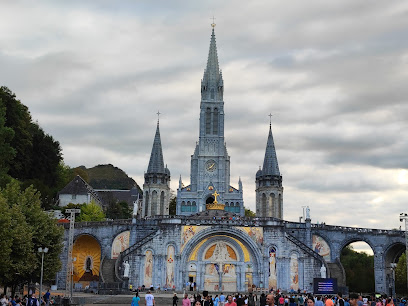
Grottes de Bétharram
Explore the mesmerizing Grottes de Bétharram, an underground wonderland of stunning rock formations and breathtaking chambers in the French Pyrenees.
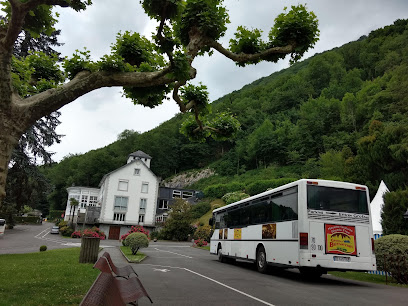
Sanctuary of Our Lady of Lourdes
Explore the Sanctuary of Our Lady of Lourdes, a renowned pilgrimage site in France, where faith, history, and stunning architecture converge.
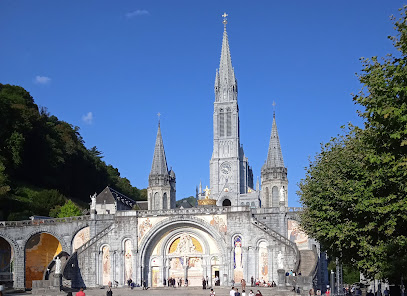
Basilica of St. Pius X
Discover the architectural splendor and spiritual significance of the Basilica of St. Pius X, a must-see destination in Lourdes, France.
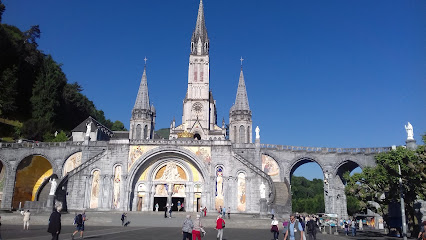
Funiculaire du Pic du Jer
Discover breathtaking views of the Pyrenees and Lourdes on the iconic Funiculaire du Pic du Jer, a must-visit tourist attraction in France.
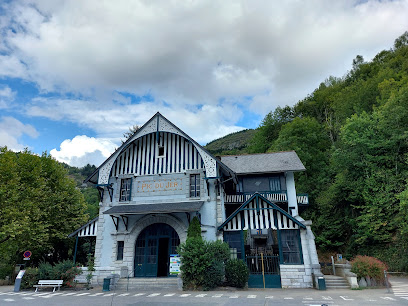
Château Fort Musée Pyrénéen
Discover the rich history and breathtaking beauty of the Pyrenees at Château Fort Musée Pyrénéen in Lourdes, a perfect blend of culture and nature.
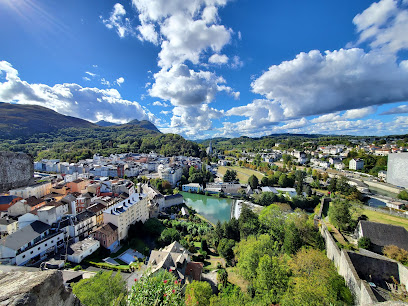
Church of Saint Bernadette
Discover the profound peace and spiritual heritage at the Church of Saint Bernadette in Lourdes, a sacred site for pilgrims and visitors alike.
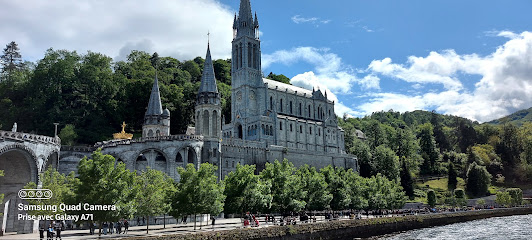
Maison Paternelle de Sainte-Bernadette
Explore the legacy of Saint Bernadette at Maison Paternelle, a serene museum in Lourdes that captures the spirit of a revered saint and her remarkable journey.
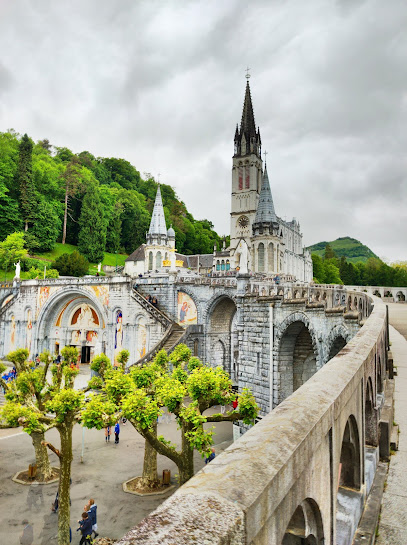
Massabielle Grotto
Experience the spiritual beauty and tranquil ambiance of the Massabielle Grotto in Lourdes, a sacred site of miracles and devotion amidst stunning natural surroundings.
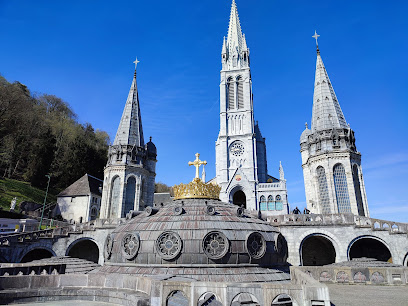
Musée du Petit Lourdes
Explore the art and history of Lourdes at Musée du Petit Lourdes, showcasing miniature masterpieces and rich cultural heritage.
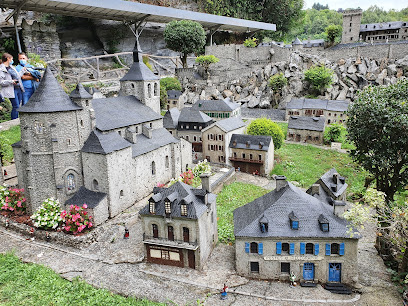
Musée de Cire de Lourdes
Explore the enchanting Muséé de Cire de Lourdes, a wax museum showcasing historical and religious figures in a captivating setting.

Tourist Office of Lourdes
Explore Lourdes with expert guidance from the Tourist Office, your gateway to local attractions, spiritual sites, and authentic experiences in this sacred town.
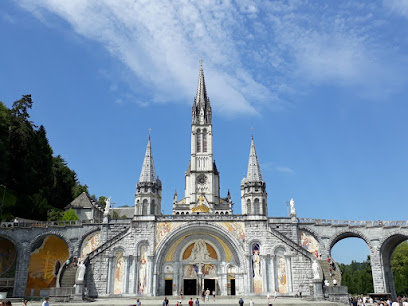
Le Cachot
Explore the rich spiritual heritage of Lourdes at Le Cachot, an essential museum showcasing the life of Saint Bernadette and the town's miraculous history.
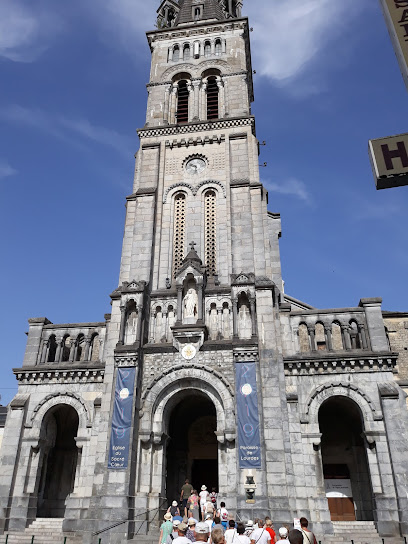
Molino de Boly / Casa natal de Bernardita
Discover the humble beginnings of Saint Bernadette at Molino de Boly, a serene museum in Lourdes celebrating faith and history.
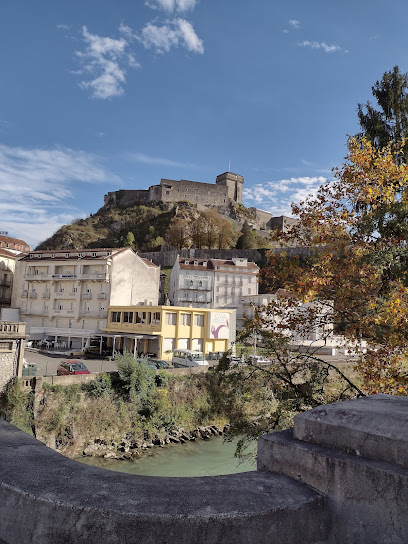
La Ferme Du bon'air
Explore La Ferme Du Bon'Air, a delightful children's farm and animal park in Lourdes, France, ideal for family-friendly adventures and nature education.
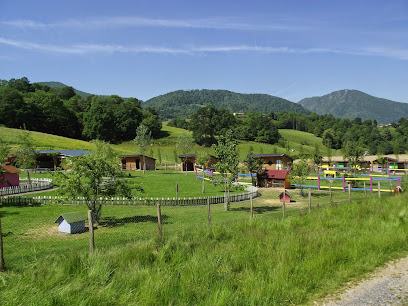
Unmissable attractions to see
Ordesa y Monte Perdido National Park
Explore the breathtaking landscapes and diverse wildlife of Ordesa y Monte Perdido National Park, a UNESCO World Heritage site in the Spanish Pyrenees.
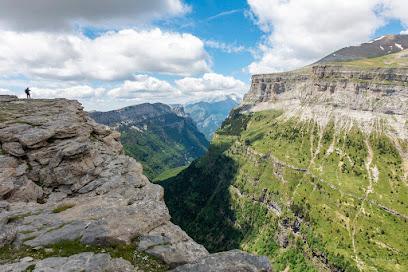
Pont d'Espagne
Experience the breathtaking beauty of Pont d'Espagne, a stunning bridge and hiking area in the heart of the Pyrenees, perfect for outdoor adventures.
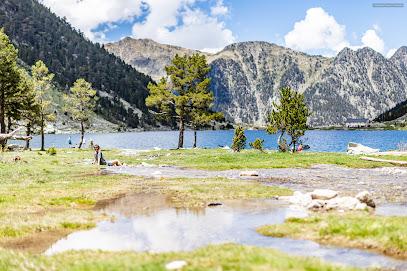
Basilica of Our Lady of the Rosary
Explore the stunning Basilica of Our Lady of the Rosary in Lourdes, a spiritual haven with breathtaking architecture and deep-rooted significance.
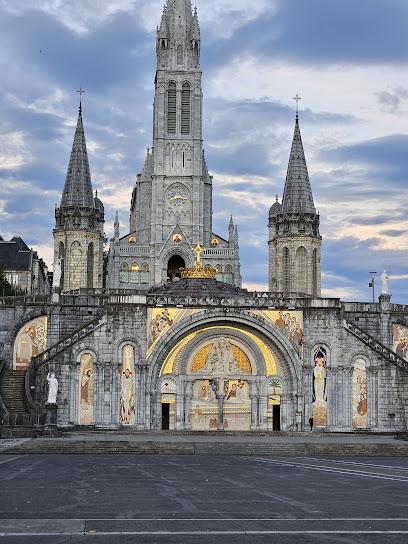
Sanctuary of Our Lady of Lourdes
Discover the Sanctuary of Our Lady of Lourdes, a spiritual haven in the French Pyrenees, renowned for its miraculous waters and serene atmosphere.
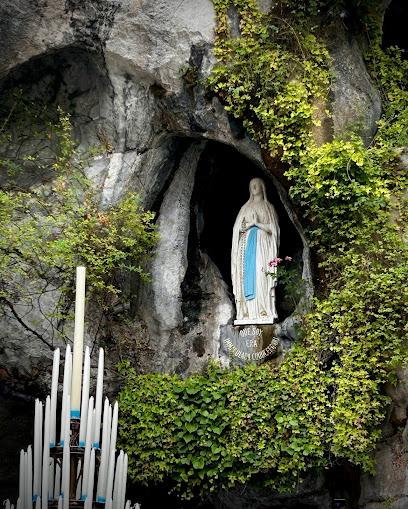
Basilica of St. Pius X
Explore the awe-inspiring Basilica of St. Pius X in Lourdes, a modern architectural marvel and spiritual sanctuary for pilgrims and tourists alike.
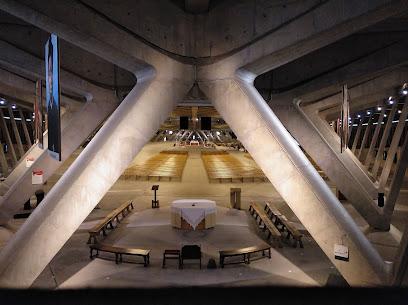
Téléphérique du Pic du Midi de Bigorre
Discover breathtaking views and thrilling adventures at Téléphérique du Pic du Midi de Bigorre, the gateway to the stunning Pyrenees mountains.

Faunístico Lacuniacha Park
Discover the beauty and diversity of wildlife at Faunístico Lacuniacha Park, a premier animal park in the picturesque Huesca region of Spain.
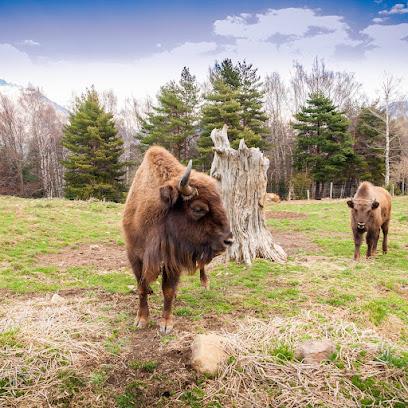
Pic du Midi Observatory
Discover the awe-inspiring Pic du Midi Observatory, where science meets stunning views in the heart of the Pyrenees.
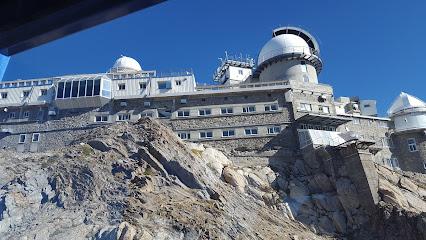
Château Fort Musée Pyrénéen
Explore the stunning Château Fort Musée Pyrénéen in Lourdes, where history, culture, and nature unite in a breathtaking setting.
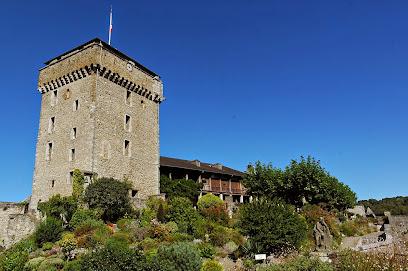
Funiculaire du Pic du Jer
Experience the stunning heights of Pic du Jer with the Funiculaire du Pic du Jer, where breathtaking views and rich history meet in the heart of Lourdes.
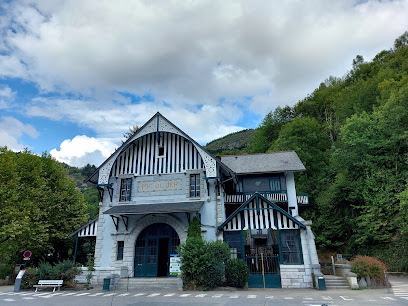
Maison Paternelle de Sainte-Bernadette
Explore the profound history of Saint Bernadette at Maison Paternelle, a serene museum in Lourdes, France, filled with spiritual significance and unique souvenirs.

Cirque de Gavarnie
Discover the stunning Cirque de Gavarnie, a UNESCO World Heritage site, where towering cliffs and majestic waterfalls create an unforgettable alpine experience.
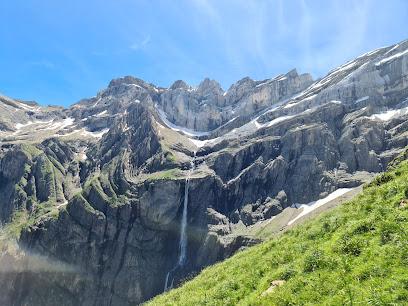
Massabielle Grotto
Discover the serene Massabielle Grotto in Lourdes, France, a sacred site of miraculous healings and profound spiritual experiences.
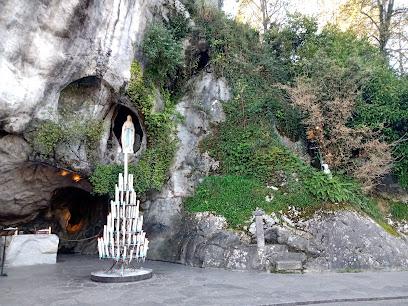
Cascada de la Cola de Caballo
Discover the breathtaking beauty of Cascada de la Cola de Caballo in Ordesa y Monte Perdido National Park, a stunning natural wonder in the Spanish Pyrenees.

Musée du Petit Lourdes
Explore the artistic heritage of Lourdes at Musée du Petit Lourdes, where art and spirituality intertwine in a captivating museum experience.
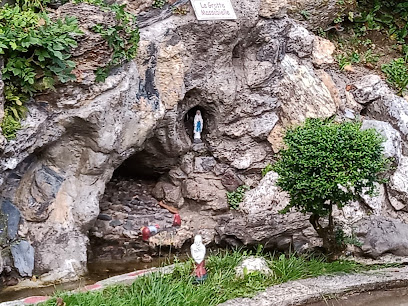
Essential places to dine
L'Embarcadère
Savor exquisite French cuisine and enjoy vibrant bar vibes at L'Embarcadère, a culinary gem by the lake in Lourdes.
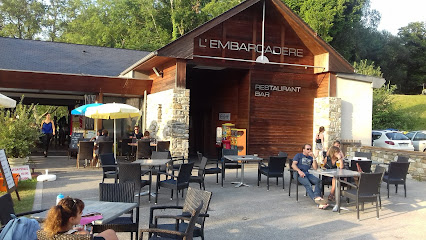
Pizzeria Da Marco
Experience authentic Italian cuisine at Pizzeria Da Marco in Lourdes - where every slice tells a story.

Bar Made In Italy
Experience the best of Italian cuisine at Bar Made In Italy in Lourdes, where authentic flavors meet a warm atmosphere.
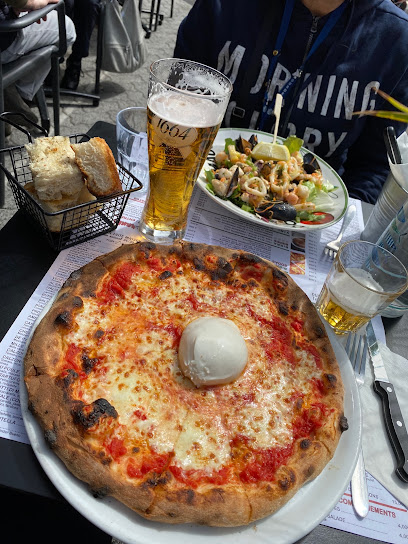
Les 100 Culottes Brasserie Bar Tapas
Discover vibrant flavors at Les 100 Culottes Brasserie Bar Tapas in Lourdes - where culinary delight meets lively ambiance.
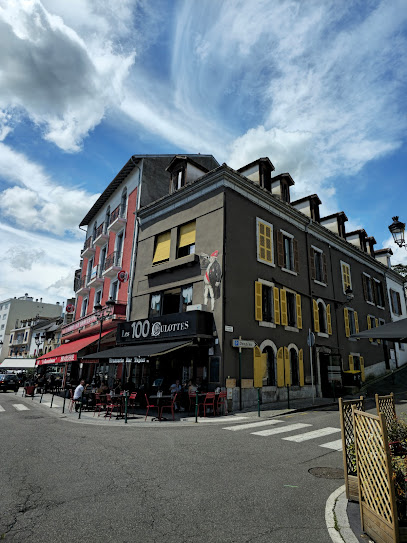
At King Albert
Experience delightful dining at At King Albert in Lourdes—where local flavors meet warm hospitality.
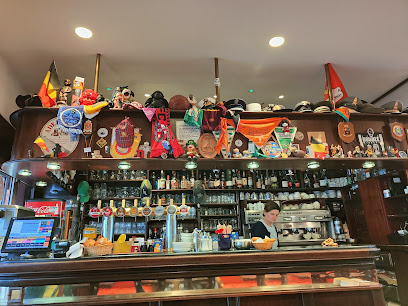
Joan of Arc Cafe
Discover delightful French cuisine at Joan of Arc Cafe in Lourdes—where local flavors meet warm hospitality.
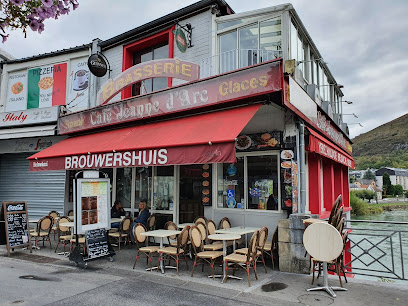
Café Brasserie Les Brancardiers
Experience authentic French cuisine at Café Brasserie Les Brancardiers in Lourdes – where every meal is a celebration of local flavors.
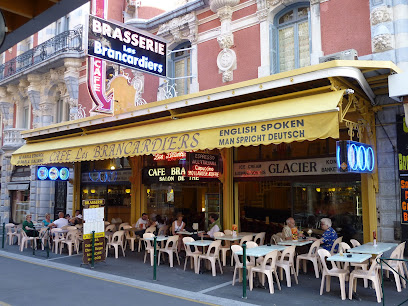
Rivierasol
Discover Rivierasol in Lourdes - A delightful fusion of French cuisine, pizza perfection, and fresh salads in a vibrant atmosphere.
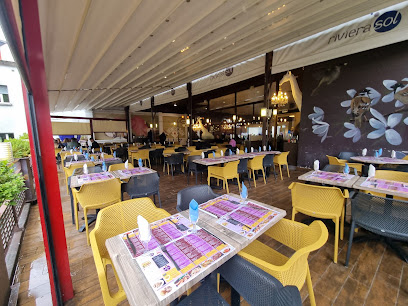
Pizzeria le basilic
Discover authentic Italian flavors at Pizzeria le basilic in Lourdes - where every slice tells a story.
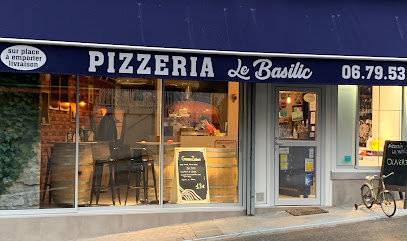
Le Palacio
Discover exquisite modern French cuisine at Le Palacio in Lourdes - where tradition meets innovation in every dish.
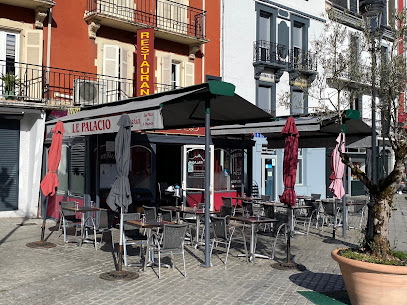
RESTAURANT PIZZERIA L'ANGELUS
Experience authentic Italian flavors at Restaurant Pizzeria L'Angelus in Lourdes – where every meal is a celebration of taste and tradition.
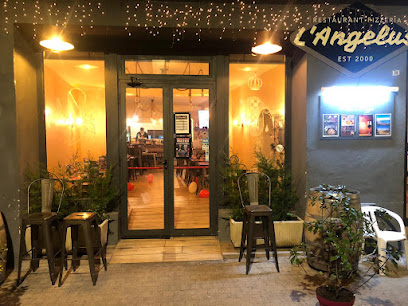
Restaurant Le Carrefour Café
Experience delightful French cuisine at Restaurant Le Carrefour Café in Lourdes - perfect for every palate!
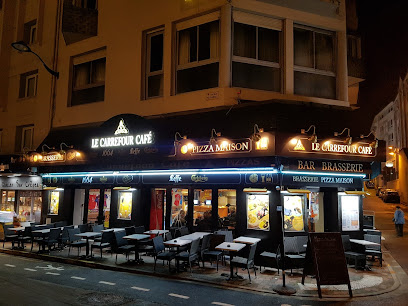
Chez Tonton's Lourdes, restaurant pizzeria
Discover authentic Italian flavors at Chez Tonton in Lourdes - where delicious pizza meets warm hospitality.
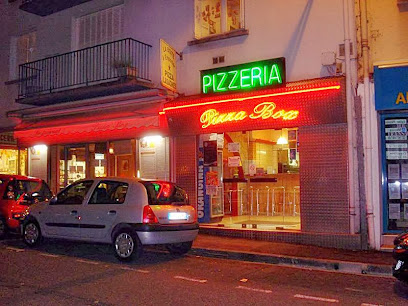
Restaurant Tibétain Lung ta
Experience authentic Tibetan cuisine at Restaurant Tibétain Lung ta in Lourdes—where every dish tells a story.
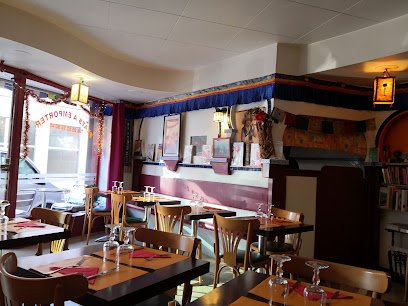
Eleanor restaurant
Discover culinary delights at Eleanor Restaurant in Lourdes - where local flavors meet warm hospitality.
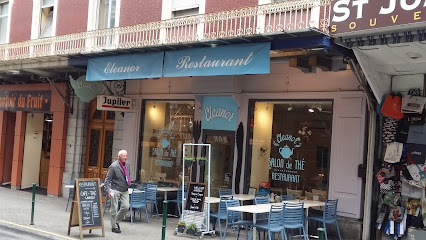
Markets, malls and hidden boutiques
Palace of the Rosary
Explore the Palace of the Rosary in Lourdes, a treasure trove of religious goods and unique gifts reflecting the spirit of this sacred pilgrimage site.
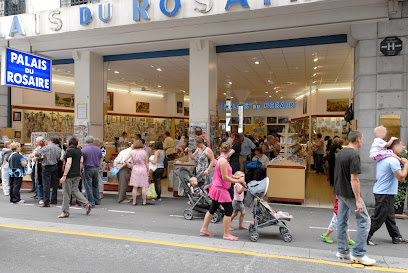
A la Grotte de Lourdes
Discover a treasure trove of religious artifacts and souvenirs at A la Grotte de Lourdes, a must-visit for spiritual seekers in the heart of Lourdes.
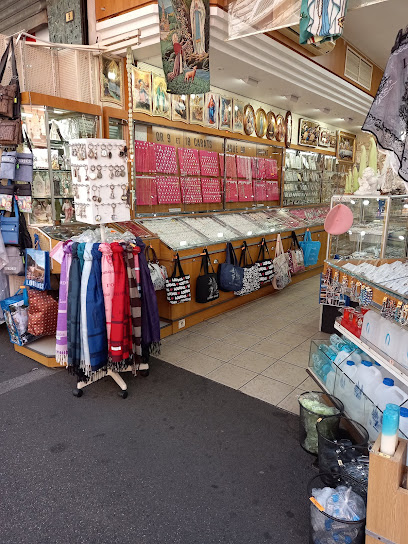
Store Foucauld The Father
Explore the spiritual heart of Lourdes at Store Foucauld The Father, your destination for religious goods and meaningful souvenirs.
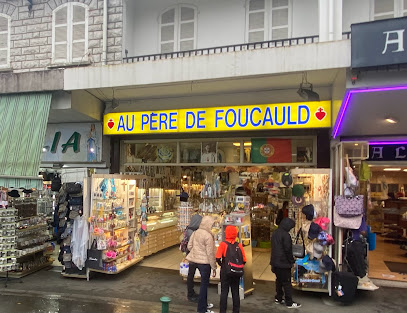
Librairie de la Grotte - la boutique officielle du Sanctuaire Notre - Dame de Lourdes
Explore the Librairie de la Grotte in Lourdes, a spiritual haven offering an extensive selection of religious books and artifacts for every pilgrim.
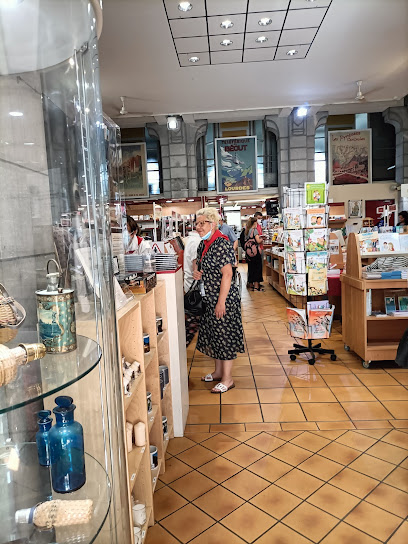
Au Mouton des Pyrénées
Explore Au Mouton des Pyrénées in Lourdes for trendy clothing for the whole family, blending local craftsmanship with contemporary fashion.
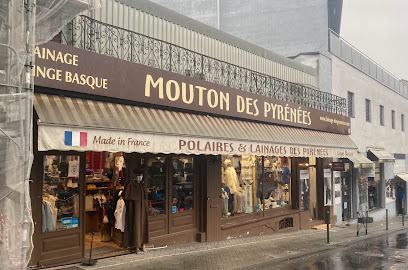
Produits Monastiques (Le bastan)
Explore Produits Monastiques in Lourdes for gourmet delights, artisanal products, and unique souvenirs that capture the spirit of the region.
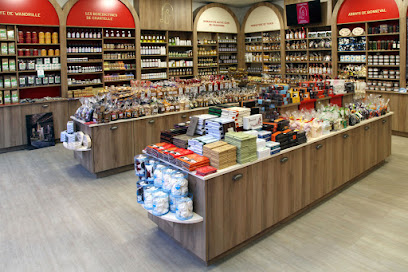
Candle shop
Explore the Candle Shop in Lourdes for exquisite candles and religious artifacts, a serene spot for reflection and remembrance.
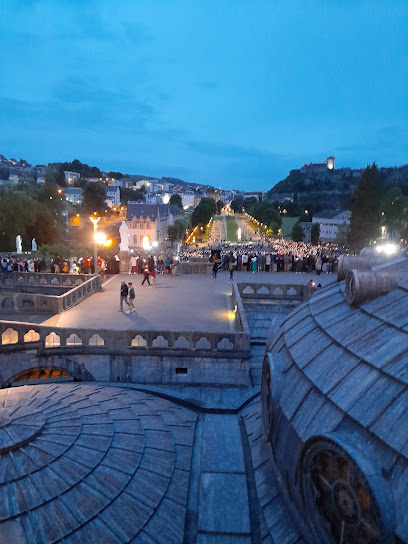
L'Ermitage
Discover L'Ermitage in Lourdes for unique souvenirs that embody the spirit of this sacred pilgrimage destination.
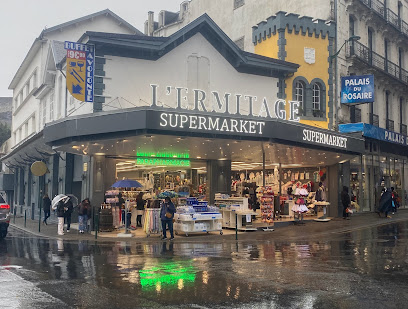
Bréal
Discover stylish and affordable fashion at Bréal in Lourdes, the perfect stop for tourists seeking trendy clothing options.
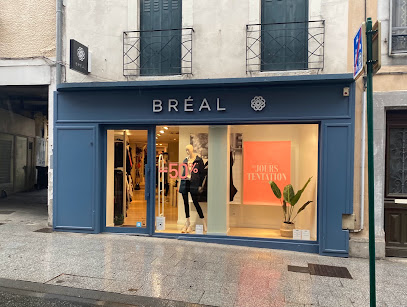
Boutique Oscar
Discover unique women's fashion at Boutique Oscar in Lourdes, blending local charm with contemporary styles for the discerning shopper.
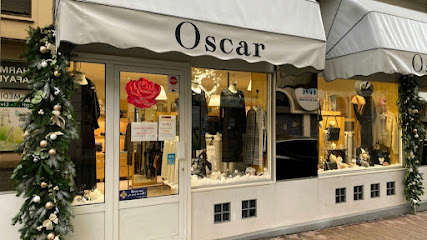
SAMSARA
Explore SAMSARA, Lourdes' chic women's clothing store offering unique styles and personalized shopping experiences for every occasion.
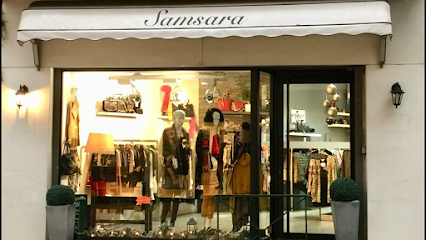
Boutique Sainte Anne
Discover unique souvenirs and religious artifacts at Boutique Sainte Anne, a charming gift shop in the heart of Lourdes, France.
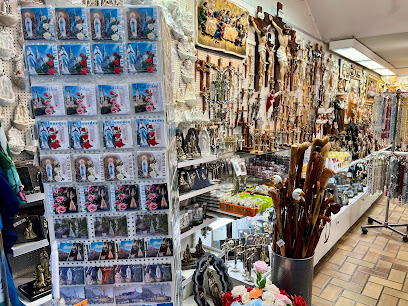
Magasin Soubirous
Discover unique gifts and religious treasures at Magasin Soubirous in Lourdes, a charming destination for every traveler seeking memorable souvenirs.

Aux souvenirs de lourdes
Explore the heart of Lourdes at Aux Souvenirs de Lourdes, where religious treasures and unique souvenirs await every traveler.
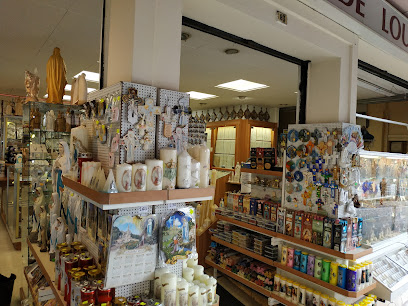
La Place du CBD Lourdes
Discover La Place du CBD Lourdes, a unique cannabis store offering high-quality CBD products in the heart of Lourdes, blending culture, wellness, and exploration.
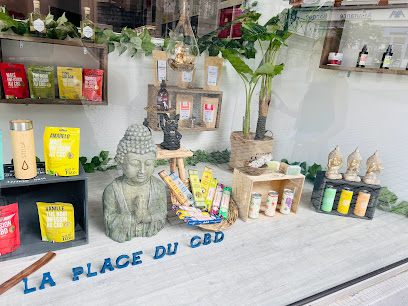
Essential bars & hidden hideouts
L'Embarcadère
Discover authentic French cuisine at L'Embarcadère in Lourdes, where culinary tradition meets a charming atmosphere.
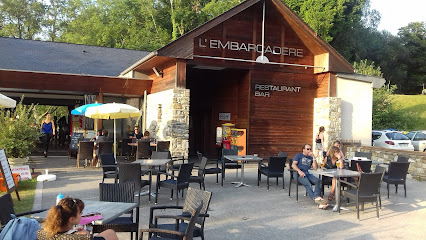
Le Navarre
Experience authentic French dining at Le Navarre in Lourdes, where every meal is a celebration of flavor and tradition.
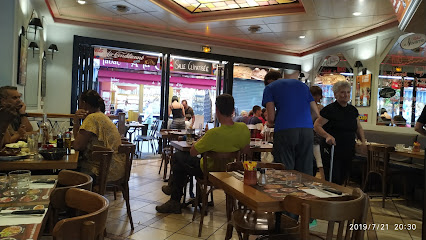
Les 100 Culottes Brasserie Bar Tapas
Savor the vibrant flavors of tapas and cocktails at Les 100 Culottes Brasserie Bar Tapas in Lourdes, where culinary experiences come to life.
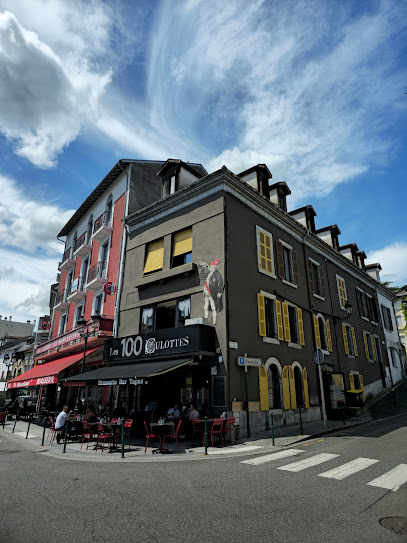
At King Albert
Experience the best of local and international cuisine at At King Albert, Lourdes' charming restaurant and coffee shop.
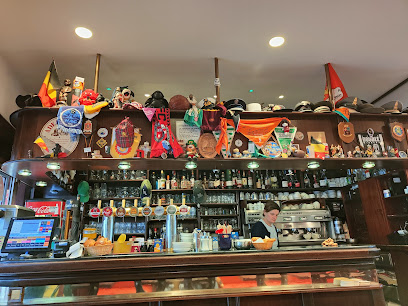
Joan of Arc Cafe
Experience the delightful blend of flavors and ambiance at Joan of Arc Cafe, a perfect stop in Lourdes for tourists seeking local culinary delights.
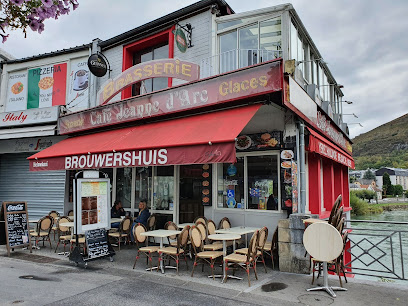
Café Brasserie Les Brancardiers
Discover the charm of French cuisine at Café Brasserie Les Brancardiers, a cozy spot in Lourdes blending tradition with a local touch.
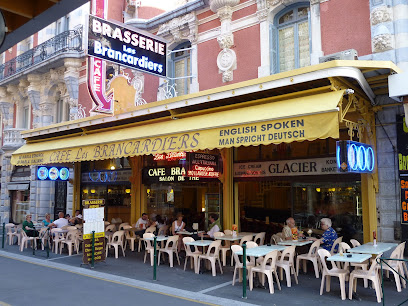
Café Le Cantegril
Discover the charm of Café Le Cantegril in Lourdes, where delicious cuisine and a warm atmosphere await every traveler.
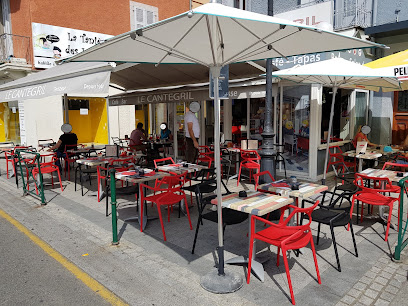
New Orleans Café
Discover the vibrant flavors of New Orleans Café in Lourdes, where barbecue, pizza, and a cozy atmosphere await every visitor.
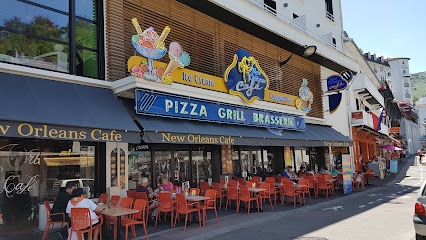
Le Saint Honoré Café Brasserie
Discover the perfect blend of café culture and bar charm at Le Saint Honoré in Lourdes. Enjoy local cuisine and a welcoming atmosphere.
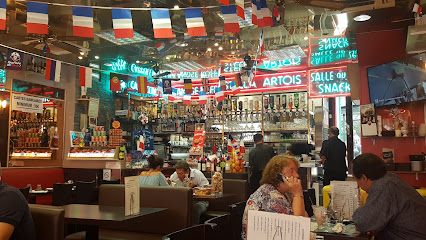
Café Brasserie Le Barcelonne
Experience the warmth of French hospitality at Café Brasserie Le Barcelonne in Lourdes, where delicious cuisine meets charming atmosphere.
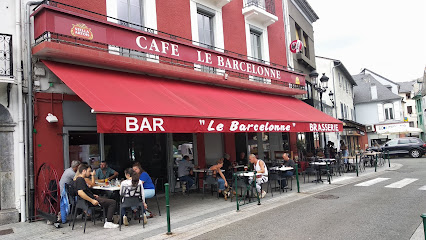
The Limerick Irish Pub
Experience authentic Irish hospitality at The Limerick Irish Pub in Lourdes, where good food, great drinks, and lively entertainment await travelers.
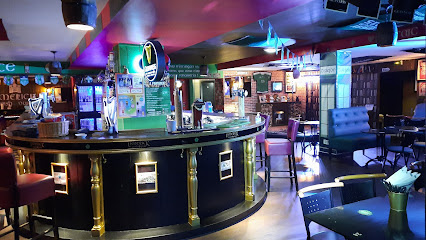
Bar des PTT
Experience the charm of Lourdes at Bar des PTT, a cozy bar and café offering delightful drinks and local flavors in a welcoming atmosphere.
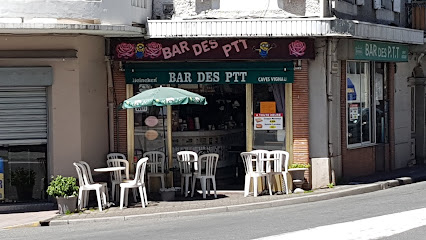
Le Perchoir Lourdes
Experience exquisite dining at Le Perchoir Lourdes, where local flavors meet stunning views in the heart of this iconic pilgrimage town.
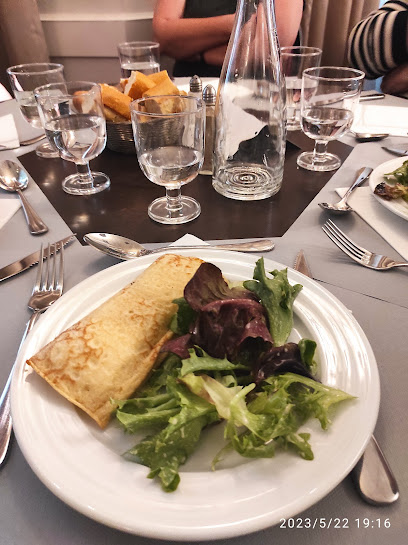
La Pergola
Discover the cozy charm of La Pergola in Lourdes, where delightful drinks and welcoming ambiance await every visitor.
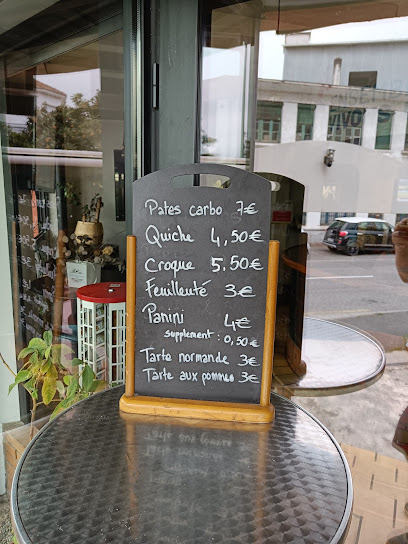
L'EDEN Bar Brasserie
Discover the flavorful delights of L'EDEN Bar Brasserie in Lourdes, where local brews and French cuisine come together in a warm, inviting atmosphere.
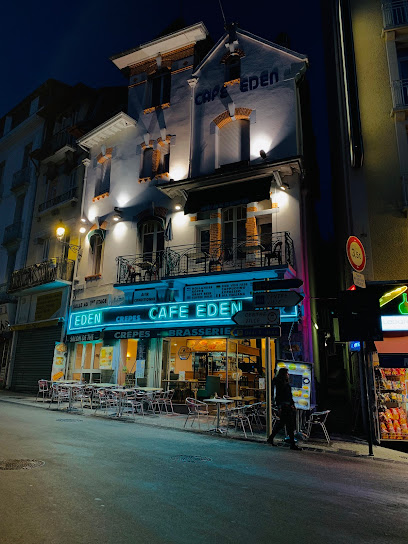
Travel experiences inspired by this city
Explore more travel diariesLocal Phrases
-
- HelloBonjour
[bon-zhoor] - GoodbyeAu revoir
[oh ruh-vwahr] - YesOui
[wee] - NoNon
[nohn] - Please/You're welcomeS'il vous plaît/De rien
[seel voo pleh/duh ryen] - Thank youMerci
[mehr-see] - Excuse me/SorryExcusez-moi/Désolé
[eks-ku-zay mwa/dey-zoh-lay] - How are you?Comment ça va?
[koh-mohn sah vah?] - Fine. And you?Bien. Et vous?
[byen. ay voo] - Do you speak English?Parlez-vous anglais?
[par-lay voo ahn-glay] - I don't understandJe ne comprends pas
[zhuh nuh kohm-prahnd pah]
- HelloBonjour
-
- I'd like to see the menu, pleaseJe voudrais voir le menu, s'il vous plaît
[zhuh voo-dray vwahr luh meh-nyoo, seel voo pleh] - I don't eat meatJe ne mange pas de viande
[zhuh nuh mahnj pah duh vee-ahnd] - Cheers!Santé!
[sahn-tay] - I would like to pay, pleaseJe voudrais payer, s'il vous plaît
[zhuh voo-dray pay-yay, seel voo pleh]
- I'd like to see the menu, pleaseJe voudrais voir le menu, s'il vous plaît
-
- Help!Au secours!
[oh suh-koo] - Go away!Allez-vous en!
[ah-lay voo ahn] - Call the Police!Appelez la Police!
[ah-peh-lay lah poh-lees] - Call a doctor!Appelez un médecin!
[ah-peh-lay uh mayd-sahn] - I'm lostJe suis perdu(e)
[zhuh swee pair-doo(e)] - I'm illJe suis malade
[zhuh swee mah-lahd]
- Help!Au secours!
-
- I'd like to buy...Je voudrais acheter...
[zhuh voo-dray zah-shay...] - I'm just lookingJe regarde juste
[zhuh ruh-gahrd zheust] - How much is it?Combien ça coûte?
[kohm-byen sah koot] - That's too expensiveC'est trop cher
[say troh shair] - Can you lower the price?Pouvez-vous baisser le prix?
[poo-vay voo beh-say luh pree]
- I'd like to buy...Je voudrais acheter...
-
- What time is it?Quelle heure est-il?
[kel er ay-teel] - It's one o'clockIl est une heure
[eel ay oon er] - Half past (10)Dix et demi
[dees ay duhm-ee] - MorningMatin
[mah-tan] - AfternoonAprès-midi
[ah-pray mee-dee] - EveningSoir
[swahr] - YesterdayHier
[yehr] - TodayAujourd'hui
[oh-zhoor-dwee] - TomorrowDemain
[duh-man] - 1Un
[uhn] - 2Deux
[duh] - 3Trois
[twah] - 4Quatre
[kat] - 5Cinq
[sank] - 6Six
[seece] - 7Sept
[set] - 8Huit
[weet] - 9Neuf
[nuhf] - 10Dix
[dees]
- What time is it?Quelle heure est-il?
-
- Where's a/the...?Où est...
[oo ay...] - What's the address?Quelle est l'adresse?
[kel ay lah-dress] - Can you show me (on the map)?Pouvez-vous me montrer (sur la carte)?
[poo-vay voo muh mohn-tray (sürr lah kart)] - When's the next (bus)?Quand est le prochain (bus)?
[kahnd ay luh proh-shahn (boos)] - A ticket (to ....)Un billet (pour ...)
[uhn bee-yay (poor ...)]
- Where's a/the...?Où est...
History of Lourdes
-
The history of Lourdes dates back to ancient times when it was a small fortified village known as 'Lorda.' The town's strategic location near the Pyrenees made it an important settlement for the Romans, who constructed roads and fortifications in the area.
-
During the medieval period, Lourdes grew around its imposing castle, Château Fort de Lourdes, which dominates the town from its rocky outcrop. The castle was a key defensive structure in the region, especially during the Hundred Years' War between England and France.
-
Lourdes gained worldwide fame in 1858 when a 14-year-old girl named Bernadette Soubirous experienced a series of apparitions of the Virgin Mary at the Grotto of Massabielle. These visions were eventually recognized by the Catholic Church, transforming Lourdes into one of the most important pilgrimage sites in the world.
-
Following the apparitions, the Sanctuary of Our Lady of Lourdes was developed, including the construction of the Basilica of the Immaculate Conception and the Basilica of Our Lady of the Rosary. The Sanctuary now attracts millions of pilgrims each year, seeking spiritual and physical healing.
-
During World War II, Lourdes was part of the unoccupied zone of Vichy France. The town served as a safe haven for many refugees and became an important center of religious and humanitarian activity throughout the war.
-
Today, Lourdes remains a vibrant town that harmoniously blends its rich historical heritage with its status as a major religious pilgrimage destination. The town's infrastructure has developed to accommodate the influx of pilgrims, including numerous hotels, restaurants, and medical facilities.
Lourdes Essentials
-
Lourdes is located in the southwestern part of France in the foothills of the Pyrenees. The nearest major airport is Tarbes-Lourdes-Pyrénées Airport (LDE), which is about 10 km from the town center. Alternatively, Pau Pyrénées Airport (PUF) is 50 km away and has more international connections. From either airport, you can take a taxi or shuttle bus to Lourdes. Lourdes is also accessible by train; the SNCF train station in Lourdes is well-connected to major cities like Paris, Toulouse, and Bordeaux. High-speed TGV trains from Paris to Lourdes take around 6 hours.
-
Lourdes is a small town, and many of its attractions are within walking distance. For local travel, taxis are readily available and reasonably priced. The town also has an efficient bus network operated by TLP Mobilités, which connects key areas including the Sanctuary of Our Lady of Lourdes, the town center, and surrounding neighborhoods. Car rentals are available but generally not necessary unless you plan to explore the broader Pyrenees region. For a scenic experience, consider taking the Petit Train Touristique, a small tourist train that offers guided tours of the town.
-
The official currency in France is the Euro (€). Most hotels, restaurants, and shops in Lourdes accept credit cards, particularly Visa and MasterCard. However, it is advisable to carry some cash, especially for small purchases or in places that may not accept cards. ATMs are widely available throughout the town. Currency exchange services are available at banks and exchange bureaus, but it's generally more cost-effective to withdraw euros directly from ATMs using your debit or credit card.
-
Lourdes is generally a safe destination for tourists. However, as with any popular tourist spot, petty crimes such as pickpocketing can occur, especially in crowded areas like the Sanctuary and the train station. Avoid carrying large amounts of cash and keep your belongings secure. It is advisable to stay in well-lit areas at night and avoid secluded areas. There are no specific high-crime neighborhoods targeting tourists, but exercising standard precautions will ensure a safe visit.
-
In case of emergency, dial 112, the Europe-wide emergency number, for immediate assistance. The local police station and medical facilities, including the Centre Hospitalier de Lourdes, are well-equipped to handle emergencies. Pharmacies are available throughout the town for minor health issues and over-the-counter medications. It’s recommended to have travel insurance that covers medical emergencies. There is also a tourist police unit specifically to assist visitors.
-
Fashion: Do dress modestly, especially when visiting religious sites. Avoid wearing overly casual or revealing clothing. Religion: Do participate respectfully in religious customs and ceremonies. Always maintain a respectful demeanor within the Sanctuary and other religious sites. Public Transport: Do be courteous to other passengers. Don’t eat or drink on public transport. Greetings: Do greet people with a polite 'Bonjour' (Good day) or 'Bonsoir' (Good evening). A handshake is a common form of greeting. Eating & Drinking: Do try local dishes and wines. Don’t forget to say 'Merci' (Thank you) to show appreciation.
-
To experience Lourdes like a local, visit the weekly market at Place du Champ Commun, where you can purchase fresh produce, cheeses, and other local specialties. Take a leisurely stroll along the Gave de Pau River for scenic views and a peaceful atmosphere. For a unique perspective, climb to the Château Fort de Lourdes, a historic castle offering panoramic views of the town and surrounding mountains. Engage with locals, who are generally friendly and willing to share insights about the town’s history and culture.
Trending Landmark in Lourdes
-
Basilica of Our Lady of the Rosary
-
Grottes de Bétharram
-
Sanctuary of Our Lady of Lourdes
-
Basilica of St. Pius X
-
Funiculaire du Pic du Jer
-
Château Fort Musée Pyrénéen
-
Church of Saint Bernadette
-
Maison Paternelle de Sainte-Bernadette
-
Massabielle Grotto
-
Musée du Petit Lourdes
-
Musée de Cire de Lourdes
-
Tourist Office of Lourdes
-
Le Cachot
-
Molino de Boly / Casa natal de Bernardita
-
La Ferme Du bon'air
Nearby Cities to Lourdes
-
Things To Do in Huesca
-
Things To Do in Toulouse
-
Things To Do in Pamplona
-
Things To Do in Arinsal
-
Things To Do in El Serrat
-
Things To Do in Ordino
-
Things To Do in La Massana
-
Things To Do in Andorra la Vella
-
Things To Do in Escaldes-Engordany
-
Things To Do in Canillo
-
Things To Do in Encamp
-
Things To Do in Soldeu
-
Things To Do in Pas de la Casa
-
Things To Do in San Sebastián
-
Things To Do in Lleida














